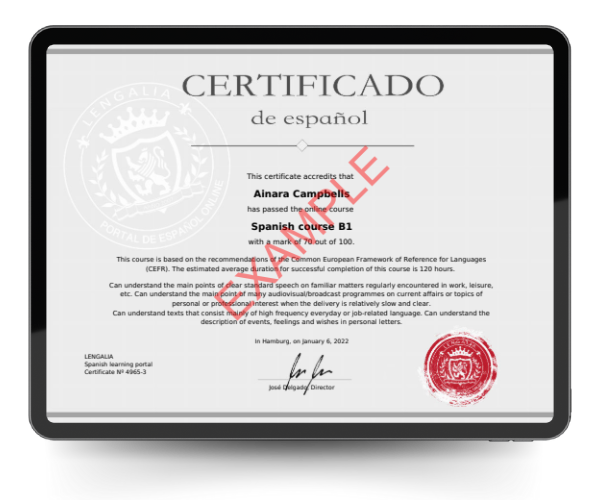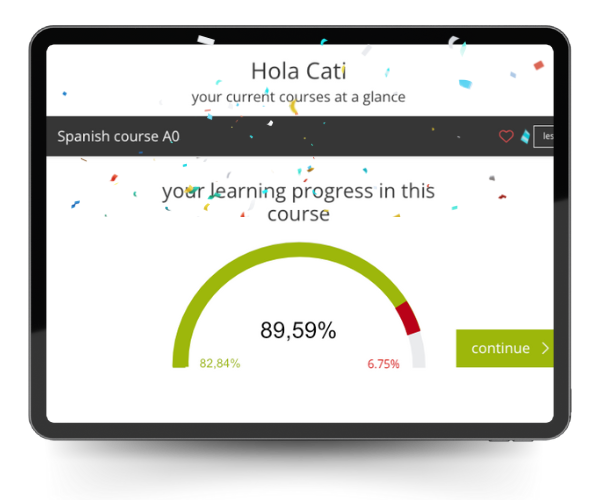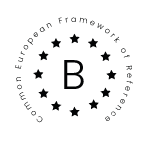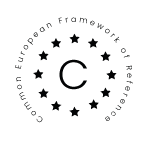The following placement test will help you determine your Spanish proficiency level online, so you can find the right Spanish course for you. This way, you can ensure that you learn exactly what you need and progress particularly quickly.
![[Translate to English:] Spanisch Zertifikat](/fileadmin/de/spanisch-lernen-online/6._spanisch-lernen-online-niveaus.png)
International language standards according to the CEFR
The Common European Framework of Reference for Languages, abbreviated as CEFR, is the basis for the development of common curricula, teaching materials, and language exams. The CEFR distinguishes between competency levels A1 - C2.
International language standards according to the CEFR
Lengalia offers Spanish courses at 6 levels, based on the recommendations of the Common European Framework of Reference for Languages (CEFR). Those who complete a Spanish course at Lengalia and pass the final exam will receive a Spanish certificate.

Take about 30 minutes to complete this test.
The test is divided into 3 levels: A1-A2, B1-B2, and C1-C2. Each level includes questions on grammatical comprehension, reading comprehension, and listening comprehension. If you pass a level, the test will automatically continue to the next level.

Grammar comprehension
36 questions

Reading comprehension
12 questions

Listening comprehension
12 questions
Then use our online Spanish courses! In guided self-learning courses with support from tutors, you will efficiently learn exactly what you want and need. You can also take a final test at any time and receive a certificate recognized by many universities and institutions. Try it now and see for yourself!


Can understand and use familiar everyday expressions and very basic phrases in order to satisfy specific needs. Can introduce him/herself and others and can ask and answer questions about personal details such as where he/she lives, people he/she knows and things he/she has. Can interact in a simple way provided the other person talks slowly and clearly and is prepared to help.

Can understand sentences and frequently used expressions related to areas of most immediate relevance (e.g. very basic personal and family information, shopping, local geography, employment). Can communicate in a simple way and perfom routine tasks requiring a simple and direct exchange of information on familiar and routine matters. Can describe in simple terms aspects of his/her background, immediate environment and matters in areas of immediate basic need.

Can understand the main points of clear standard input on familiar matters regularly encountered in work, school, leisure, etc. Can deal with most situations likely to arise whilst travelling in an area where the language is spoken. Can produce simple connected texts on topics which are familiar or of personal interest. Can describe experiences and events, dreams, hopes and ambitions and briefly give reasons and explanations for opinions and plans.

Can understand the main ideas of a complex text on both concrete and abstract topics, including technical discussions in his/her field of specialization. Can interact with a degree of fluency and spontaneity that makes regular interaction with native speakers quite possible without any strain for either party. Can produce a clear, detailed text on a wide range of subjects and explain a viewpoint from a topical issue giving the advantages and Independent disadvantages of various options.

Can understand a wide range of demanding, longer texts, and recognize implicit meaning. Can express him/herself fluently and spontaneously without much obvious searching for expressions. Can use language flexibly and effectively for social, academic and professional purposes. Can produce a clear, well-structured, detailed text on complex subjects, showing controlled use of organizational patterns, connectors and cohesive devices.

Can understand with ease virtually everything heard or read. Can summarise information from different spoken and written sources, reconstructing arguments and accounts in a coherent presentation. Can express him/herself spontaneously, very fluently and precisely, differentiating finer shades of meaning, even in more complex situations.
Source: Conseil de l'Europe
Here you can see the following correspondences between the ILR, the European language proficiency scale CEFR, and the proficiency scale of the American Council on the Teaching of Foreign Languages (ACTFL):
| CEFR | A1 | A2 | B1 | B2 | C1 | C2 |
| ILR | 0/0+ | 1 | 1+ | 2/2+ | >3/3+ | 4/4+ |
| ACTFL | NL, NM, NH | IL, IM | IH | AL, AM, AH | S | D |
An influential proficiency measure is the Interagency Language Roundtable (ILR) scale, developed by the US State Department. It identifies five levels of language proficiency:
| Level 1: Elementary | Can fulfill the basic needs in a language, such as ordering meals, asking for the time and asking for directions. |
| Level 2: Limited Working Proficiency | Can fulfill routine social demands, such as small talk about one’s self, one’s family, and current events. |
| Level 3: Professional Working Proficiency | Professional Working Proficiency – Can discuss a variety of topics with ease and almost completely understand what others are saying. |
| Level 4: Full Professional Proficiency | Can participate in all manners of conversations with ease and only rarely makes grammatical mistakes. |
| Level 5: Native or Bilingual Proficiency | Can use the language the way an educated native speaker of the language would. |
Additionally, a person in between levels might be at a 1+, 2+, 3+, or 4+ level.